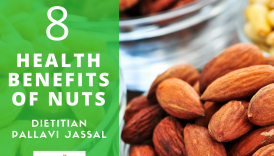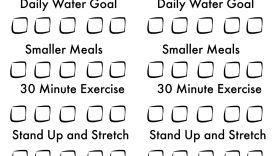Building a Stronger You: Fitness Strategies for a Healthier Tomorrow

Importance of Fitness
Fitness is more than just a trend; it’s a crucial component of a healthy lifestyle. Regular physical activity helps improve overall wellbeing, reducing the risk of chronic diseases such as obesity, heart disease, and diabetes. It’s also an excellent way to boost mental health by alleviating stress and anxiety. Many find that engaging in fitness activities not only enhances their mood but also fosters a sense of community. For instance, joining a local running group or fitness class can create lasting friendships while keeping physically active.
- Building a Stronger You: Fitness Strategies for a Healthier Tomorrow
- Importance of Fitness
- Setting Realistic Goals
- Understanding Your Body
- Body Composition
- Metabolism
- Designing Your Fitness Routine
- Cardiovascular Exercises
- Strength Training
- Balancing Nutrition and Exercise
- Healthy Eating Habits
- Supplements for Fitness
- Rest and Recovery
- Importance of Sleep
- Active Recovery Techniques
- Mindfulness and Mental Health
- Stress Management
- Benefits of Meditation
- Staying Consistent and Motivated
- Accountability Partners
- Tracking Progress
- Overcoming Obstacles
- Time Management
- Dealing with Plateaus
- Setting New Challenges
- Trying Different Workout Styles
- Participating in Fitness Events
- Celebrating Your Achievements
- Rewarding Yourself
- Setting New Goals
Setting Realistic Goals
Creating achievable fitness goals is essential for maintaining motivation and ensuring progress. Instead of overwhelming oneself with lofty ambitions, breaking them down into smaller, manageable targets can lead to sustainable improvements. Consider these tips:
- SMART Goals: Focus on Specific, Measurable, Achievable, Relevant, and Time-bound objectives.
- Track Progress: Keep a journal or use apps to monitor workouts and milestones.
- Celebrate Small Wins: Acknowledge the little achievements along the way, whether that’s completing a new exercise or simply showing up consistently.
By setting realistic goals, individuals find it easier to stay committed and continue moving forward on their fitness journey.
Understanding Your Body
Body Composition
Understanding body composition is a key factor in achieving fitness goals. It refers to the percentage of fat, bone, water, and muscle in your body. Exploring your body composition can empower you to make informed decisions when it comes to exercise and nutrition. For example, two people may weigh the same but have different body compositions. One may have a higher muscle mass, while the other has a higher fat percentage. Here are some methods to assess body composition:
- Skinfold Measurements: Calipers measure the thickness of skinfolds at various sites to estimate body fat.
- Bioelectrical Impedance Analysis (BIA): A device sends a low-level electrical current through the body to estimate fat and muscle percentage.
- DEXA Scans: Specialized imaging to get a detailed picture of body composition.
Metabolism
Metabolism is the process by which the body converts food into energy. It plays a vital role in determining how effectively a person burns calories. Factors influencing metabolism include:
- Age: Metabolism generally slows down with age.
- Muscle Mass: More muscle can lead to a higher basal metabolic rate (BMR).
- Activity Level: Regular physical activity increases calorie expenditure.
For example, when Ashley started strength training, she noticed not only improved muscle tone but also an increase in her daily calorie burn. Understanding both body composition and metabolism allows individuals to tailor their fitness and nutrition strategies effectively, leading to better results and healthier lifestyles.
Designing Your Fitness Routine
Cardiovascular Exercises
Building an effective fitness routine requires a balanced approach, and cardiovascular exercises are a vital piece of the puzzle. These activities elevate your heart rate, improving cardiovascular health, endurance, and burning calories. Popular options include:
- Running or Jogging: Great for burning calories and boosting mood.
- Cycling: An excellent choice for low-impact exercise that strengthens legs.
- Swimming: Provides a full-body workout while being easy on the joints.
For instance, after incorporating 30 minutes of cycling into his weekly routine, Mike found he had more energy for his evening workouts, allowing him to push harder in strength training.
Strength Training
Complementing cardio with strength training is essential for building muscle and improving metabolism. This type of exercise can be done with weights, resistance bands, or body weight. Key benefits include:
- Increased Muscle Mass: Helps to elevate BMR, making it easier to manage weight.
- Enhanced Bone Density: Important for long-term health.
- Improved Functional Strength: Aids daily tasks and activities.
Starting with basic exercises like squats, push-ups, and lunges can make a significant difference. Breaking expectations down into weekly goals—such as adding an extra set or increasing weights—can keep motivation high. Balancing both cardiovascular exercises and strength training forms the foundation of a well-rounded fitness routine that is both effective and sustainable.
Balancing Nutrition and Exercise
Healthy Eating Habits
To truly maximize fitness efforts, balancing nutrition with exercise is paramount. Healthy eating habits fuel the body, ensuring it has the energy required for workouts while supporting recovery. Here are some essential tips for maintaining a balanced diet:
- Whole Foods: Focus on fruits, vegetables, whole grains, and lean proteins.
- Meal Prep: Plan meals ahead of time to avoid unhealthy snacking.
- Hydration: Aim for at least eight glasses of water each day to stay hydrated.
When Emma began meal prepping on Sundays, she found it much easier to eat healthy throughout the week, leading to better performance in her workouts.
Supplements for Fitness
While a well-rounded diet should be the primary source of nutrition, some individuals consider supplements to boost their fitness journey. Common supplements include:
- Protein Powder: Ideal for post-workout recovery and muscle building.
- BCAAs (Branched-Chain Amino Acids): Help reduce muscle soreness and aid recovery.
- Multivitamins: Fill nutritional gaps from the food we may not consume.
However, it’s important to remember that supplements should complement a healthy diet, not replace it. Consulting a healthcare professional before starting any supplementation is always a wise decision. Achieving the perfect balance between nutrition and exercise sets the foundation for a successful fitness journey and promotes optimal health.
Rest and Recovery
Importance of Sleep
Rest and recovery are crucial components of any successful fitness plan, and sleep plays a significant role in this process. Quality sleep helps repair muscles, restore energy, and improve overall mental focus. When Sarah prioritized her sleep schedule, she noticed increased energy during workouts and quicker recovery times. Here are some tips to enhance sleep quality:
- Establish a Routine: Go to bed and wake up at the same time daily.
- Create a Relaxing Environment: Dark, quiet, and cool surroundings promote restful sleep.
- Limit Screen Time: Reducing blue light exposure before bed can improve sleep quality.
Aim for 7-9 hours of sleep per night to ensure optimal recovery and performance.
Active Recovery Techniques
In addition to sleep, incorporating active recovery techniques can enhance the recovery process. These techniques keep the body moving while reducing strain on muscles. Some effective methods include:
- Light Aerobic Exercise: Activities like walking or gentle cycling can boost circulation without overexerting.
- Stretching and Yoga: Helps improve flexibility and relieve muscle tightness.
- Foam Rolling: Aids in muscle recovery by alleviating soreness and tension.
Integrating restful sleep and active recovery techniques into a fitness regimen results in improved performance and a reduced risk of injury, making them essential elements in any fitness journey.
Mindfulness and Mental Health
Stress Management
Amidst the hustle and bustle of daily life, managing stress effectively is crucial for both mental and physical health. High levels of stress can negatively impact fitness goals and overall wellbeing. Engaging in stress management techniques can help create a more balanced life. Strategies include:
- Time Management: Prioritizing tasks to prevent last-minute stress.
- Physical Activity: Regular exercise can significantly reduce stress levels by releasing endorphins.
- Breathing Exercises: Simple techniques like deep breathing can help calm the mind in stressful situations.
When Daniel incorporated breathing exercises into his daily routine, he noticed a marked reduction in his anxiety, leading to better focus during workouts.
Benefits of Meditation
Meditation is one powerful tool for improving mental health and enhancing mindfulness. Regular practice can lead to numerous benefits, including:
- Increased Awareness: Helps you become more attuned to your thoughts and emotions.
- Improved Focus: Aids in concentrating on tasks at hand, including workouts.
- Enhanced Emotional Health: Can reduce symptoms of anxiety and depression.
Many fitness enthusiasts, like Lisa, have found that even just five to ten minutes of daily meditation can significantly improve their mindset and performance in the gym. By embracing mindfulness and mental health practices such as stress management and meditation, individuals can cultivate a holistic approach to fitness, fostering both physical and emotional wellbeing.
Staying Consistent and Motivated
Accountability Partners
Staying consistent with fitness goals can be challenging, but having an accountability partner can make all the difference. This is someone who shares similar goals and provides mutual support throughout the journey. For instance, when Mia teamed up with her friend Emma to work out together, their motivation skyrocketed. Here are a few benefits of having an accountability partner:
- Shared Goals: Working towards common objectives fosters commitment.
- Encouragement: Friends can motivate each other during tough days.
- Increased Fun: Exercising with someone else adds an element of enjoyment.
With a reliable partner, fitness becomes less of a chore and more of an enjoyable activity.
Tracking Progress
Another essential facet of staying motivated is tracking progress. Whether through a fitness app or a simple journal, monitoring achievements can provide a significant boost in motivation. Consider these methods:
- Workout Logs: Document reps, sets, and exercises to see improvements over time.
- Body Measurements: Regularly track changes in body composition.
- Fitness Challenges: Set mini-goals to keep things exciting, like completing a certain number of workouts in a month.
By combining accountability partnerships with effective progress tracking, individuals can maintain motivation and stay consistent on their fitness journey.
Overcoming Obstacles
Time Management
When it comes to fitness, one of the most common obstacles people face is time management. Between work, family, and social obligations, finding time to exercise can feel overwhelming. However, with some simple strategies, it’s possible to carve out time for workouts. Consider these tips:
- Prioritize Workouts: Treat exercise like an important appointment in your calendar.
- Short Workouts: Even 20-30 minute high-intensity sessions can be effective.
- Incorporate Activity: Use your lunch break for a brisk walk or try a 10-minute exercise routine at home.
For example, when Jake started scheduling short workouts during his lunch breaks, he discovered he could maintain his fitness routine without feeling rushed.
Dealing with Plateaus
Another hurdle many encounter is hitting a plateau. Progress can sometimes stall due to various reasons, which may be discouraging. Here are a few strategies to overcome these plateaus:
- Change Your Routine: Mix up exercises, incorporate interval training, or try a new fitness class.
- Set New Goals: Shifting focus from weight loss to strength, flexibility, or endurance can reignite motivation.
- Evaluate Nutrition: Review eating habits to ensure they align with fitness goals.
When Lisa faced a plateau in her weight loss journey, she decided to focus on strength training, which not only challenged her body but reignited her enthusiasm. By implementing effective time management strategies and adapting workout routines, individuals can successfully overcome obstacles and continue progressing in their fitness journeys.
Setting New Challenges
Trying Different Workout Styles
Once individuals overcome obstacles and find their rhythm, setting new challenges can help maintain excitement and motivation in fitness pursuits. One effective way to do this is by trying different workout styles. Exploring new formats can not only break the monotony but also engage different muscle groups. Here are some options to consider:
- Yoga or Pilates: Enhance flexibility and core strength.
- High-Intensity Interval Training (HIIT): Maximize calorie burn in a short amount of time.
- Dance Classes: Enjoy a fun way to exercise while improving coordination.
When Max decided to try a kickboxing class, he was surprised by how much he loved it. The explosive movements provided an exhilarating challenge that kept him coming back for more.
Participating in Fitness Events
Another excellent way to set new challenges is by participating in fitness events. These can provide a structured goal to work towards and a sense of community. Consider joining:
- 5K Runs or Charity Walks: Great for beginners and a good cause.
- Obstacle Course Races: Pushes limits in a fun, competitive environment.
- Fitness Workshops: Learn new skills and meet like-minded individuals.
After participating in her first charity run, Sarah found a renewed sense of purpose in her workouts, with the added joy of contributing to a worthy cause. By embracing different workout styles and engaging in fitness events, individuals can continuously challenge themselves and rejuvenate their fitness journeys.
Celebrating Your Achievements
Rewarding Yourself
As you continue on your fitness journey, it’s crucial to take time to celebrate your achievements. Recognizing progress not only boosts motivation but also reinforces the positive changes you’ve made. Rewarding yourself can come in various forms, and it doesn’t always have to involve food. Here are some ideas:
- New Workout Gear: Treat yourself to that stylish gym outfit you’ve been eyeing.
- Spa Day: Indulge in a massage or relaxation treatment to pamper your hard-working body.
- Experience Gifts: Sign up for a fitness retreat or a class in something new, like rock climbing.
When Jenna completed her first half-marathon, she celebrated by purchasing a new pair of running shoes, giving her an exciting reason to hit the pavement again.
Setting New Goals
After celebrating your achievements, it’s time to set new goals. This continuous pursuit keeps the momentum going and encourages personal growth. When setting new objectives, consider the following strategies:
- Aim Higher: If you’ve conquered a certain distance, aim for a longer run or a more challenging workout.
- Focus on Skill Development: Try to master new techniques or skills, whether it’s lifting heavier weights or perfecting yoga poses.
- Incorporate Diversity: Explore new fitness trends or activities to keep your routine fresh and exciting.
For instance, after reaching her target weight, Mia set her sights on acing a difficult yoga pose, which not only challenged her physically but also mentally. By rewarding achievements and setting new goals, individuals foster a positive cycle of motivation and growth in their fitness journeys.





